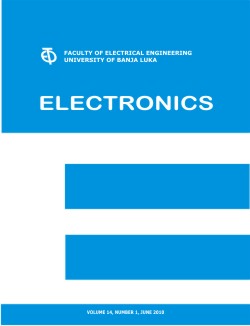Energy Efficient Multi-Core Processing
DOI:
https://doi.org/10.7251/ELS1418003LAbstract
This paper evaluates the present state of the art of energy-efficient embedded processor design techniques and demonstrates, how small, variable-architecture embedded processors may exploit a run-time minimal architectural synthesis technique to achieve greater energy and area efficiency whilst maintaining performance. The picoMIPS architecture is presented, inspired by the MIPS, as an example of a minimal and energy efficient processor. The picoMIPS is a variablearchitecture RISC microprocessor with an application-specific minimised instruction set. Each implementation will contain only the necessary datapath elements in order to maximise area efficiency. Due to the relationship between logic gate count and power consumption, energy efficiency is also maximised in the processor therefore the system is designed to perform a specific task in the most efficient processor-based form. The principles of the picoMIPS processor are illustrated with an example of the discrete cosine transform (DCT) and inverse DCT (IDCT) algorithms implemented in a multi-core context to demonstrate the concept of minimal architecture synthesis and how it can be used to produce an application specific, energy efficient processor.

